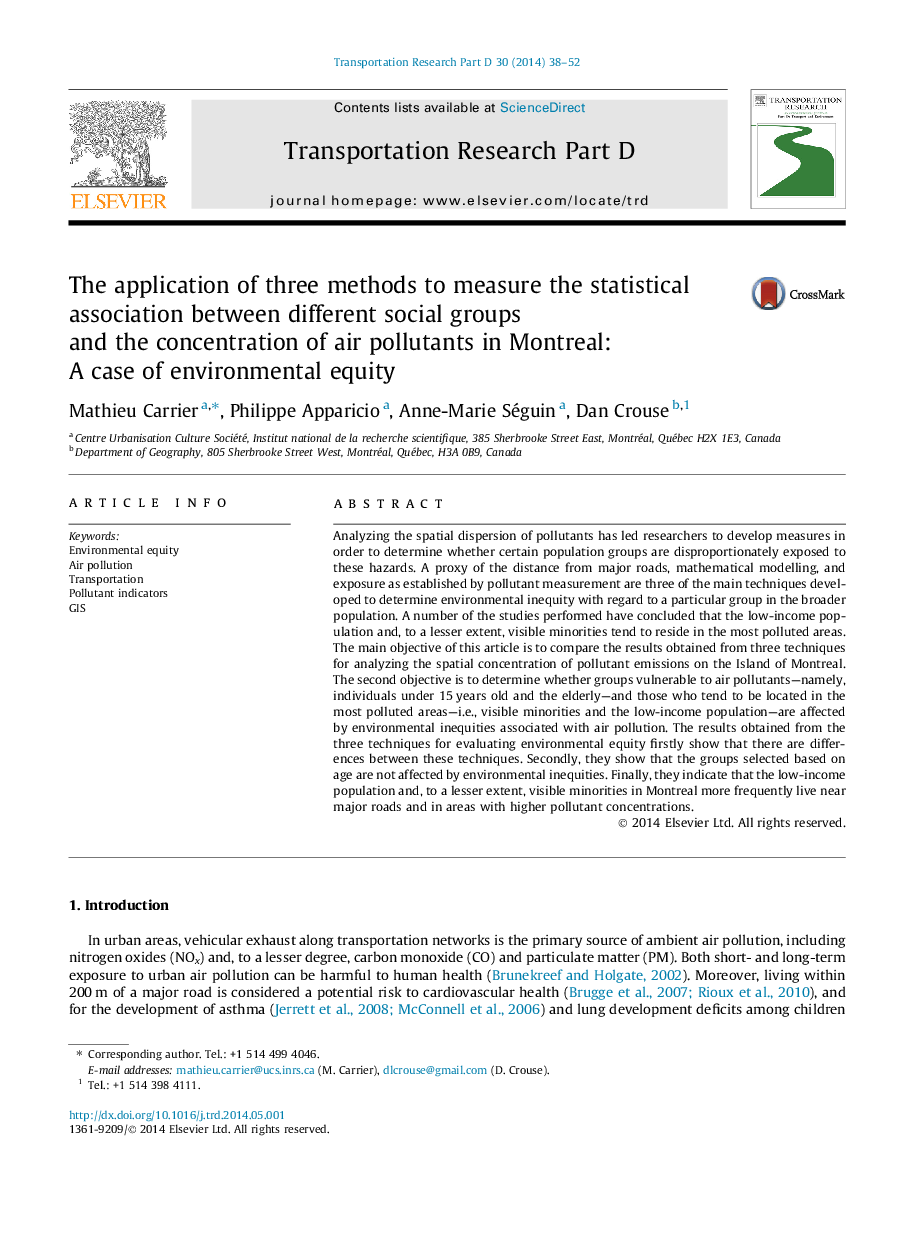| کد مقاله | کد نشریه | سال انتشار | مقاله انگلیسی | نسخه تمام متن |
|---|---|---|---|---|
| 1065714 | 1485893 | 2014 | 15 صفحه PDF | دانلود رایگان |
• Three techniques are used to measure air pollution in residential areas.
• We compare the results obtained from the three techniques.
• We determine whether the selected groups tend to live in polluted areas.
• The environmental equity assessment varies according to the three techniques.
• The low-income population tend to be located in the most polluted areas.
Analyzing the spatial dispersion of pollutants has led researchers to develop measures in order to determine whether certain population groups are disproportionately exposed to these hazards. A proxy of the distance from major roads, mathematical modelling, and exposure as established by pollutant measurement are three of the main techniques developed to determine environmental inequity with regard to a particular group in the broader population. A number of the studies performed have concluded that the low-income population and, to a lesser extent, visible minorities tend to reside in the most polluted areas. The main objective of this article is to compare the results obtained from three techniques for analyzing the spatial concentration of pollutant emissions on the Island of Montreal. The second objective is to determine whether groups vulnerable to air pollutants—namely, individuals under 15 years old and the elderly—and those who tend to be located in the most polluted areas—i.e., visible minorities and the low-income population—are affected by environmental inequities associated with air pollution. The results obtained from the three techniques for evaluating environmental equity firstly show that there are differences between these techniques. Secondly, they show that the groups selected based on age are not affected by environmental inequities. Finally, they indicate that the low-income population and, to a lesser extent, visible minorities in Montreal more frequently live near major roads and in areas with higher pollutant concentrations.
Journal: Transportation Research Part D: Transport and Environment - Volume 30, July 2014, Pages 38–52
